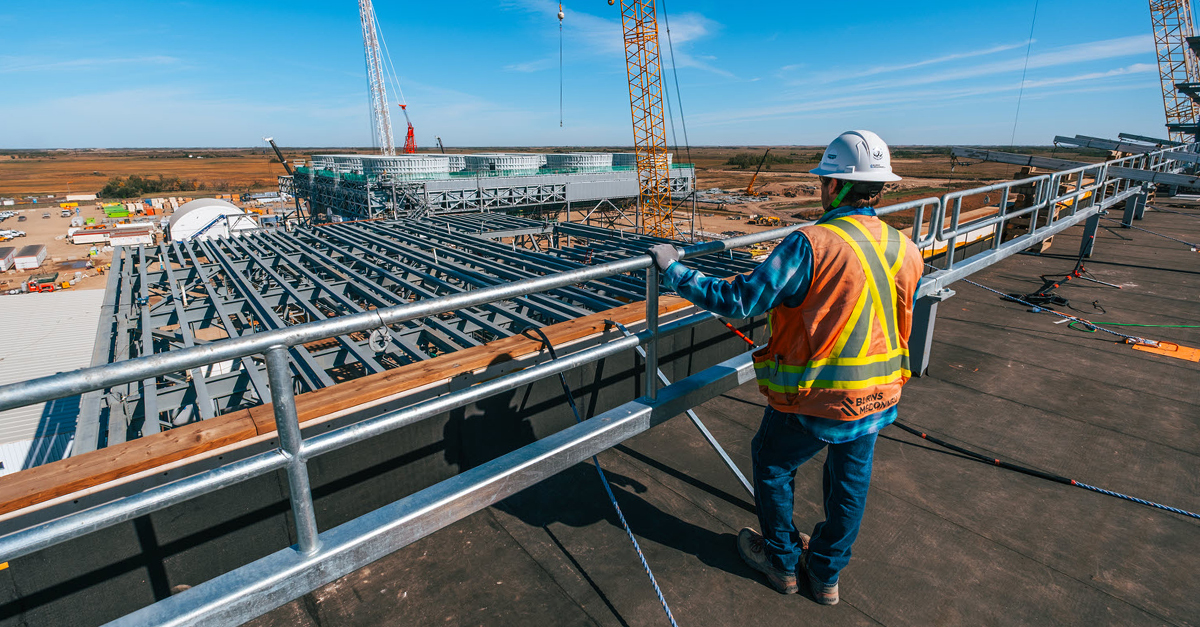Rescuing Amphibians at Great Plains Power Station
June 03, 2024

Quotables:
- In 2022, we rescued 85 Western Tiger Salamanders and 31 Northern Leopard Frogs. In 2023, that number jumped to over 1,400 rescues!
- Both the Western Tiger Salamander and Northern Leopard Frog are species at risk.
- We caught, transported, billeted, and in some cases overwintered the amphibians. The goal is to encourage the salamanders and frogs to move to the grassland west of the site — where there’s plenty of space for them to thrive!
Before a single shovel hits the ground at one of our project sites, we do a thorough environmental assessment. This can turn up all kinds of things like archeological finds to nesting birds to critical habitat. When this work first began at the future site of the Great Plains Power Station in Moose Jaw in 2019 there were no signs of amphibians in the area. But 3 years later, that all changed!
We sat down with Andrew Urzada, a Resource Specialist on our Environmental Assessment and Approvals team, to learn more.
1. What Happened at the Great Plains Power Station?
As buildings were starting to go up at the Great Plains Power Station in 2022, dozens of amphibians started showing up in the strangest places! There were a lot of crickets and grasshoppers in the area and a dugout nearby. We think that food source may have led to the temporary amphibian population explosion. And once they were there, they made themselves right at home in the shady, wet puddles around the construction site and surrounding area.
2. How Many Amphibians Are We Talking About Here?
In 2022, we rescued 85 Western Tiger Salamanders and 31 Northern Leopard Frogs. In 2023, that number jumped to over 1,400 rescues!
3. How Did You Rescue Them?
We relocated many to their breeding pond to minimize their stress levels. But in some cases, they needed a place to spend the winter.
Relocating frogs and salamanders is a delicate operation. They must be kept moist and relatively cool in transport. So, we collaborated with:
- Contractor: Burns & McDonnell
- Environmental Consultant: Summit, An Earth Services Company
- Wildlife Rescue Society of Saskatchewan
- The University of Saskatchewan
- Salthaven West Wildlife Rehabilitation and Education Centre
Together, we caught, transported, billeted, and in some cases overwintered the amphibians.
4. Why Did They Need to be Relocated? What’s So Special About Western Tiger Salamanders and Northern Leopard Frogs?
Both the Western Tiger Salamander and Northern Leopard Frog are species at risk. They face threats like:
- habitat loss and fragmentation
- emerging diseases
- pesticide contamination
- wetland drainage
We work hard to protect the environment at all stages of our work. For example, we made sure to maintain the natural drainage of the original site. But once construction was underway, we knew an active work site was no place for these fragile creatures.
5. Have There Been Any More Amphibians on Site This Year?
Amazingly, no amphibians have needed to be relocated so far this year. But we’ve been working to make the site less appealing to them. We’ve laid gravel around the buildings and minimized shady, wet areas. The goal is to encourage the salamanders and frogs to move to the grassland west of the site — where there’s plenty of space for them to thrive!
Learn More:
- Environmental Protection
- Helping the Greater Sage-Grouse Population
- Great Plains Power Station




